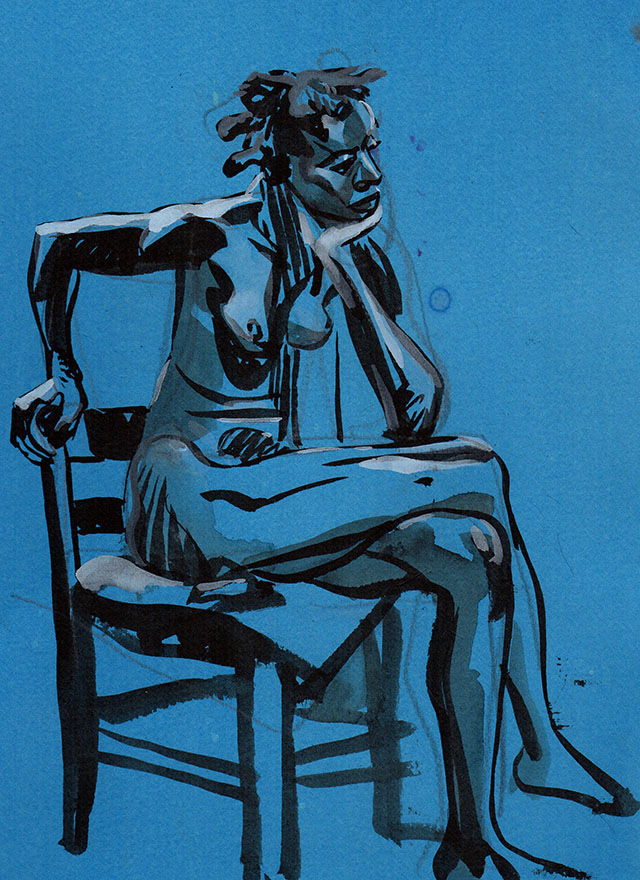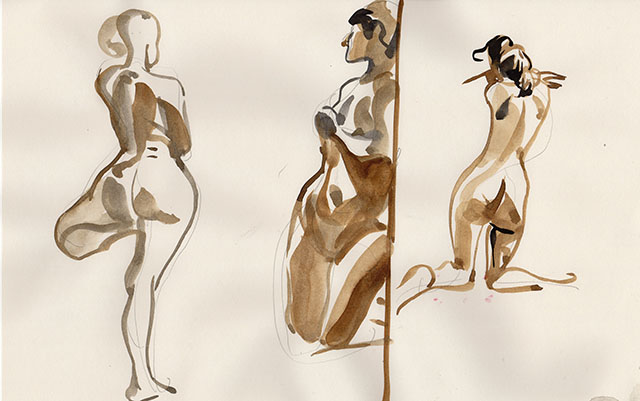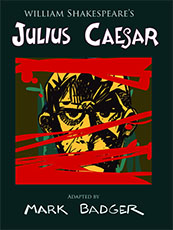Every week, since art school, at least once (usually) I’ve gone to life drawing class. In art school, we were taught the obsessive close focus of Cezanne was the the way to see the form and draw it. Teachers stressed, look, then respond, with some pattern fixed in your mind, patterns like three value systems, a simple line, warm and cool colors and draw the figure. Cezanne pretty much hammered out his work stroke by stroke in an obsessive pattern of look paint look paint. His style was that of a craftsman, just doing the work, a natural result of his looking.
I’ve always had a distaste when illustrators apply their “cool” techniques to distort figures into something important. Animators can draw in “styles” based on the model sheets they are given. Comics artist work off of some kind of conceptual model sheet in their heads so “alt” cartoonists produce drawings that panel after panel after panel look the same. You lose the dialog between the figure, looking, and what is on the paper. Commercial styles present here’s shiny neat technique to make the subject “cool” and “interesting”.
In commercial art you lose the connection from viewer through the art to the creator. In comics what you lose is the discussion of the artist with the drawing. With most styles the artist becomes an inker tracing lines to make the picture of a world.
I want a balance so that I am applying “my style” from looking in life drawing class to my actual comics. Or in art school terms, defining a formal problem to explore so at the end of the month I can assess my work and it’s direction.
Drawing sequence for figures
Goal
Create a repeatable process for handling figures that I can use from life drawing and my comics.
Steps
Define the Line of Action and Head
- Draw a line of action from one foot to opposite shoulder.
- Add the head shape.
- If a twist, add a 2nd line for the other foot/leg to line of the shoulder. For twists
Stick Figure
1.Draw a line from one shoulder to the other, and one from hip to hip
2. Close off the box of hips and shoulders to establish the torso’s form.
3. Add the Arms and legs as sticks,
4. Check where the knees and feet are placed in relation to each other. Pay attention to the sticks as representing bones, or exterior or interior lines of the shapes of the body.Box the Form
- Divide the figure into representational shape and simplified and designed form.
- Define the mass and overlaps in the drawing
- Flatten and design shapes in line
- Add Values, start with just two.
Flatten the Form
- Selects parts to make one value to flatten and make into a designed shape.
- Cartoon those
Assessment
- Does it make drawing cartoon figures easier?
- Can I do invented figures reflecting the feel of the life drawings.
- Can I create stronger compositions in life drawing?
If thinking about art/comics interests, sign up for my mailing list to be informed when Just Draw, the class in Mindfulness and Comics launches.




